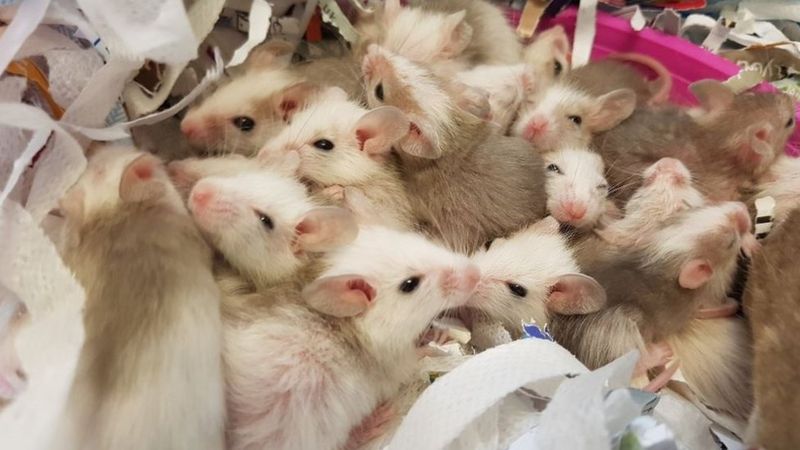

Inhaling dust that contains dried feces may cause allergies or asthma flare ups. House mouse feces in the home carries bacteria. Micro droplets of mouse urine can cause allergies in children. Symptoms of rat bite fever may appear between 3 and 10 days after contact with a contaminated mouse and include fever, vomiting, headache, rash and muscle pain. Humans can catch this bacteria-borne infectious disease through contact with a dead mouse or by consuming food contaminated by mouse feces. House mice may also spread rat bite fever, although this is uncommon. Symptoms of salmonell osis include diarrhea, fever and abdominal pain. Humans can become ill by consuming salmonella contaminated food. House mice have been implicated in the spread of salmonella through their feces. House mice can carry diseases and contaminate stored food that they eat in the home. House mice can pose serious health threa ts. They will often change their established runways for this reason. House mice are very inquisitive and tend to curiously investigate changes in their habitats. House mice are nocturnal, but they can be spotted in the house during the day. House mice prefer to nest in dark, secluded areas and often build nests out of paper products, cotton, packing materials, wall insulation and fabrics. House mice live in structures, but they can survive outdoors, too. They generally feed at dusk and before dawn, but they may also opt to eat smaller meals in between. House mice nibble, eating only small amounts of food at a time. They are excellent climbers and can jump up to a foot high however, they are colorblind and cannot see clearly beyond six inches. The size of the territory varies based on the availability of food and water. The size of a house mouse’s territory varies, but it is frequently no larger than 4-5 feet. Mature male mice are socially compatible with related mice, but they are hostile and aggressive towards strangers. They organize themselves in social hierarchies with one male dominating lower-ranking males and a large number of females in a given territory.
#Bbc mouse house professional
If you suspect a house mouse infestation, contact a licensed pest control professional to conduct an inspection and recommend a proper course of treatment to get rid of house mice. Actual rodent : If you see a mouse scurrying across the kitchen floor, there is likely a family of mice hiding out of sight.Damaged goods : Mice prefer seeds or cereals but will readily eat insects trapped on glue boards.

House mice use their strong-smelling urine to communicate with one another. Odor : The odor of house mouse urine may become distinct if there is a large number of house mice in a particular area.Active runways are sometimes visible, with rub marks, droppings, and footprints along them. Runways : House mice usually use the same pathways.Burrows : House mice burrow using nesting materials such as insulation.Rub marks : House mice often leave oily rub marks on walls along which they travel.Tracks : House mice leave 4-toed prints with their front feet and 5-toed prints with their hind feet.They are rod shaped and pointed on the ends.

The droppings measure about 1/8-1/4 inch long.

Organizers concluded it was too risky to stage the event in Ukraine, so the 2023 contest went to Britain, which says the event will be a celebration of Ukrainian culture and creativity.


 0 kommentar(er)
0 kommentar(er)
